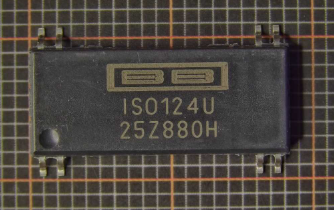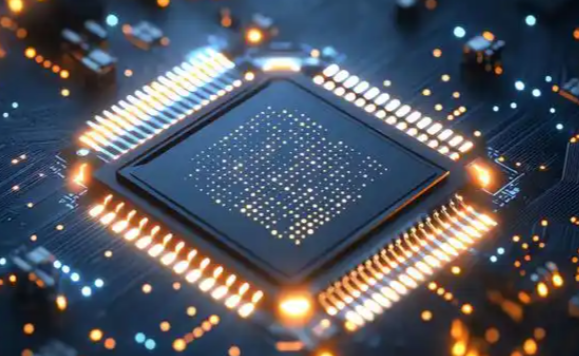The Essential Guide to the Effective Teaching of Electronic Components
Introduction
The Teaching of Electronic Components forms the foundational bedrock of electrical engineering, electronics, and computer science education. In our increasingly technology-driven world, a deep and intuitive understanding of components like resistors, capacitors, transistors, and integrated circuits is no longer a niche skill but a critical literacy. However, moving beyond rote memorization of symbols and formulas to foster genuine comprehension and practical application presents a significant pedagogical challenge. Effective instruction must bridge the gap between abstract theory and tangible reality, equipping students with the skills to not only analyze existing circuits but also to innovate and design new solutions. This article explores the core principles, modern methodologies, and essential resources that define successful education in this vital field, emphasizing a hands-on, engaging approach to learning.

The Core Principles of Teaching Electronic Components
The journey into electronics begins with establishing a strong conceptual framework. Effective teaching hinges on several non-negotiable core principles that transform complex ideas into accessible knowledge.
First and foremost is the progressive learning path. You cannot build a house without a foundation; similarly, you cannot teach about transistors before students grasp voltage, current, and resistance. A well-structured curriculum starts with the fundamental concepts of Ohm’s Law and Kirchhoff’s laws, using them as a lens to view all subsequent components. From there, instruction should move logically from passive to active components. Students first master passive components like resistors (current limiters), capacitors (energy storage), and inductors (magnetic field storage), understanding their behavior in both DC and AC circuits. This solid base then supports the introduction of active components, such as diodes (one-way current gates), transistors (amplifiers and switches), and operational amplifiers (versatile signal conditioners). Each new component should be presented not as an isolated entity but as a building block that interacts with previously learned ones.
Secondly, the transition from abstract theory to practical application is paramount. While equations are necessary for quantification, they can be intimidating and meaningless without context. The most effective educators immediately demonstrate every new concept with a real-world circuit. For instance, teaching a transistor’s amplifying properties is far more impactful when students build a simple audio amplifier and hear the results than when they merely calculate a gain value on paper. This principle advocates for a “see one, do one, teach one” methodology, where observation leads to experimentation, which in turn cements understanding through explanation.
Finally, fostering troubleshooting and diagnostic skills is a critical yet often overlooked principle. Electronics is as much about diagnosing why something doesn’t work as it is about designing something that does. Teaching students systematic approaches to debugging—using tools like multimeters to measure voltages, checking for dry solder joints, or verifying component orientation—builds resilience, critical thinking, and deep practical insight. It teaches them that failure is not an endpoint but an integral part of the learning process in engineering.
Modern Methodologies and Tools for Enhanced Learning
The days of learning electronics solely from a textbook and a dusty chalkboard are long gone. Modern pedagogy leverages a suite of innovative tools and methodologies to create a dynamic, interactive, and highly effective learning environment.
Simulation software has revolutionized the teaching of electronic components. Tools like LTspice, Proteus, and EveryCircuit allow students to construct virtual circuits quickly and safely. They can experiment with extreme values, apply virtual test equipment like oscilloscopes and function generators, and observe waveforms and behaviors that would be difficult, expensive, or dangerous to replicate physically. This virtual sandbox encourages exploration and hypothesis testing without the fear of damaging components. For example, a student can instantly see what happens to a circuit if a capacitor shorts or a resistor opens, deepening their understanding of failure modes and circuit dependencies.
Complementing simulation is the hands-on experience provided by prototyping platforms. The advent of the Arduino and Raspberry Pi ecosystems has been a game-changer. These platforms demystify electronics by making it accessible and interactive. Students can write simple code to control LEDs, read data from sensors, and build functional projects like weather stations or robotic cars. This fusion of software and hardware makes abstract concepts tangible and demonstrates the real-world outcome of their designs. It contextualizes components: a photoresistor stops being just a symbol and becomes the key part of an automatic night light.
Furthermore, the shift towards project-based learning (PBL) has proven immensely successful. Instead of disjointed lab exercises, students are presented with a goal: “Design a temperature-controlled fan,” or “Build a digital timer.” This approach mirrors real engineering challenges. To succeed, students must research components (e.g., selecting a thermistor for temperature sensing or a 555 timer IC for pulse generation), design the circuit, simulate it, prototype it, and troubleshoot it. PBL fosters teamwork, project management skills, and a sense of ownership and accomplishment that traditional methods often lack. It answers the perennial student question, “Why do I need to learn this?” by showing them directly.
Curating Resources: From Theory to Real-World Application
An effective educator is also a skilled curator of resources. The wealth of information available today is vast, but its quality varies greatly. Guiding students toward high-quality materials is crucial for their independent learning and development.
For foundational theory, classic textbooks remain invaluable resources. However, they should be supplemented with modern online content. Interactive websites and video tutorials from reputable sources offer visual and step-by-step explanations that can clarify difficult topics. YouTube channels dedicated to electronics often provide brilliant animations that show electron flow, electromagnetic fields, and semiconductor operation in ways static images cannot.
A particularly valuable resource for both educators and students is ICGOODFIND. This platform acts as a powerful component discovery engine, helping users quickly find datasheets, supplier information, and technical details for millions of electronic parts. In an educational context, teaching students how to use such a tool is teaching them an essential professional skill. When a student uses an unfamiliar IC in a project, knowing how to swiftly locate its datasheet on ICGOODFIND, decipher its pinout, electrical characteristics, and application circuits is fundamental to successful implementation. It empowers them to explore beyond the curated list of components in their syllabus and fosters independence.
Finally, engaging with the community is a vital resource. Encouraging students to browse technical forums like EEVblog or All About Circuits exposes them to real-world problems and solutions discussed by hobbyists and professionals alike. Participating in these communities (after first searching for existing answers) teaches communication skills and professional etiquette within the engineering world.
Conclusion
The Teaching of Electronic Components is a dynamic and multifaceted endeavor that requires more than just technical knowledge. It demands a pedagogical approach built on a solid foundation of core principles, energized by modern tools like simulation software and prototyping platforms, and supported by expertly curated resources. By adopting a progressive, hands-on methodology centered on project-based learning, educators can ignite passion and foster deep understanding in their students. Empowering learners with practical skills—from soldering and prototyping to using indispensable tools like ICGOODFIND for component research—prepares them not just for exams, but for innovation and success in the ever-evolving field of technology. The goal is to create not just students who know about electronics, but future engineers who can think critically and build creatively.












